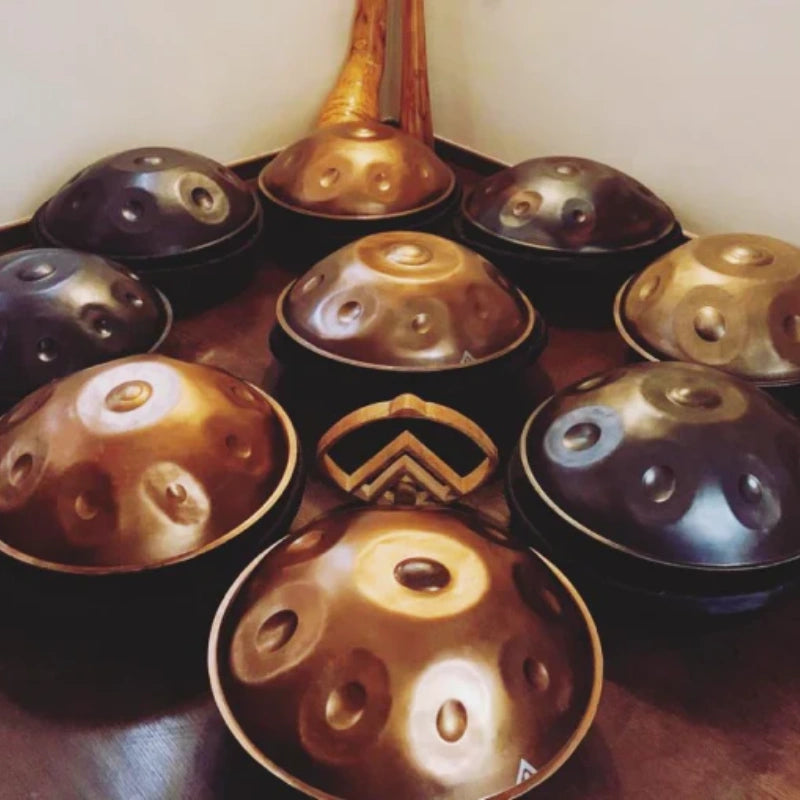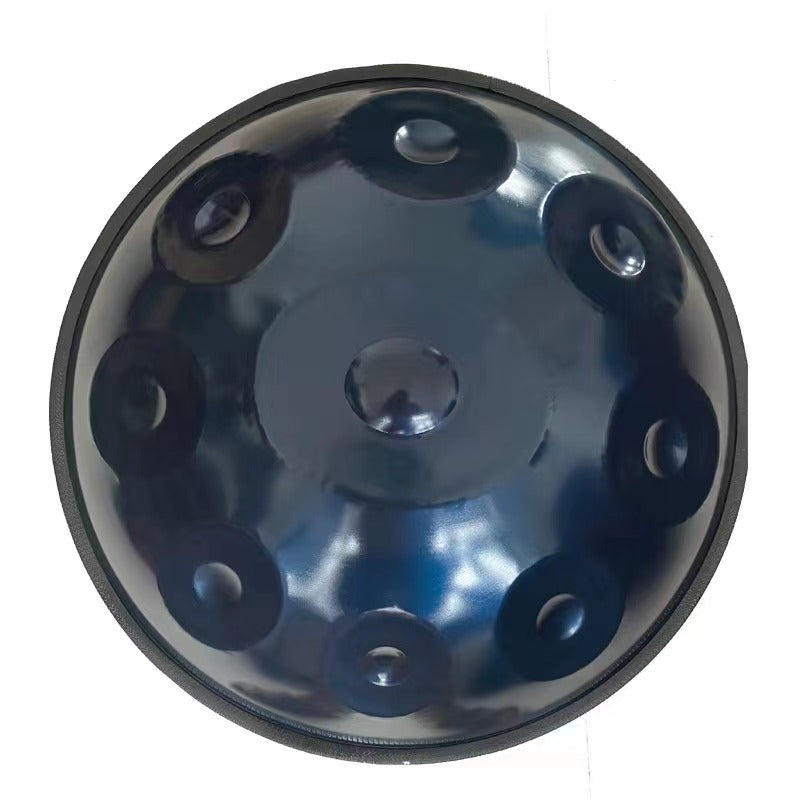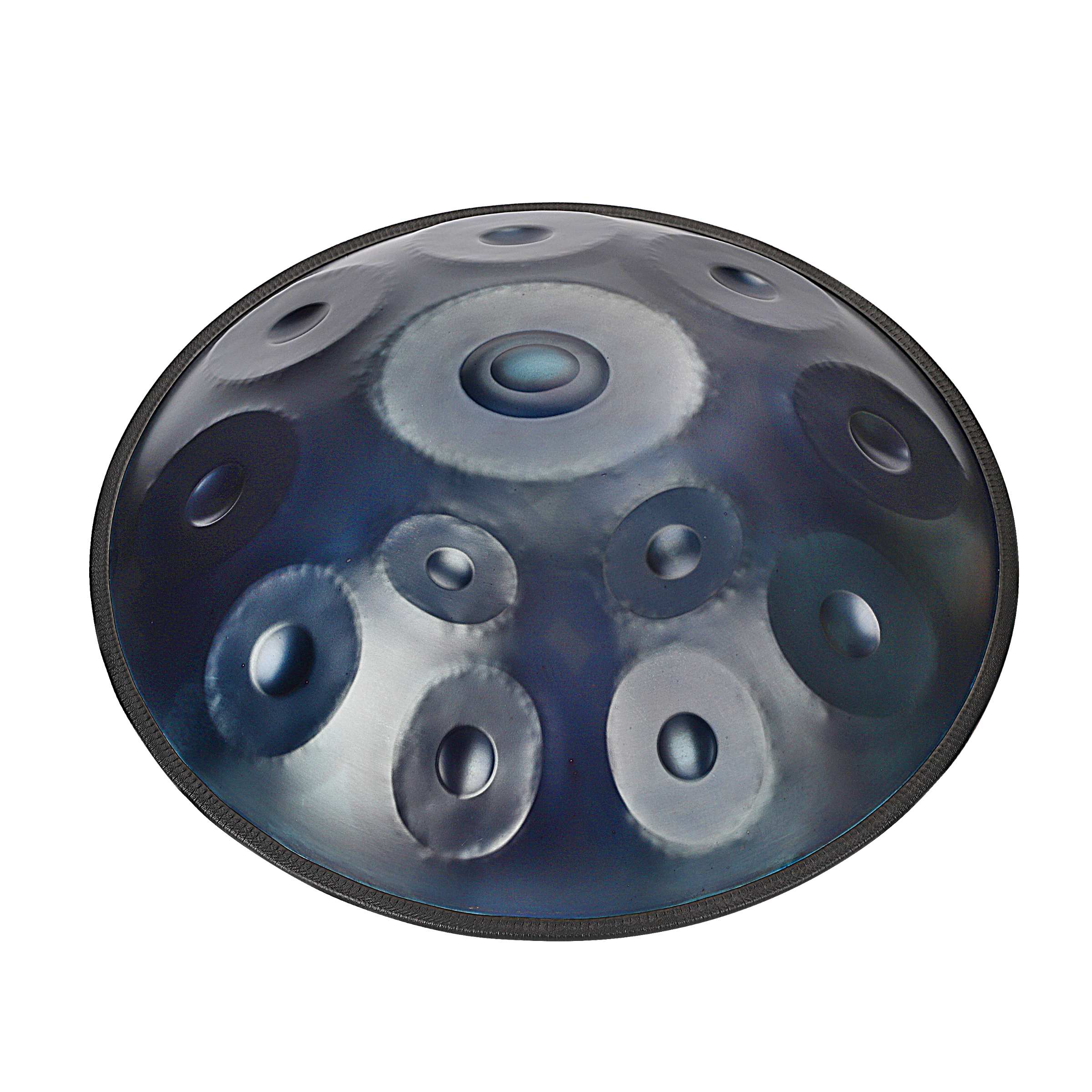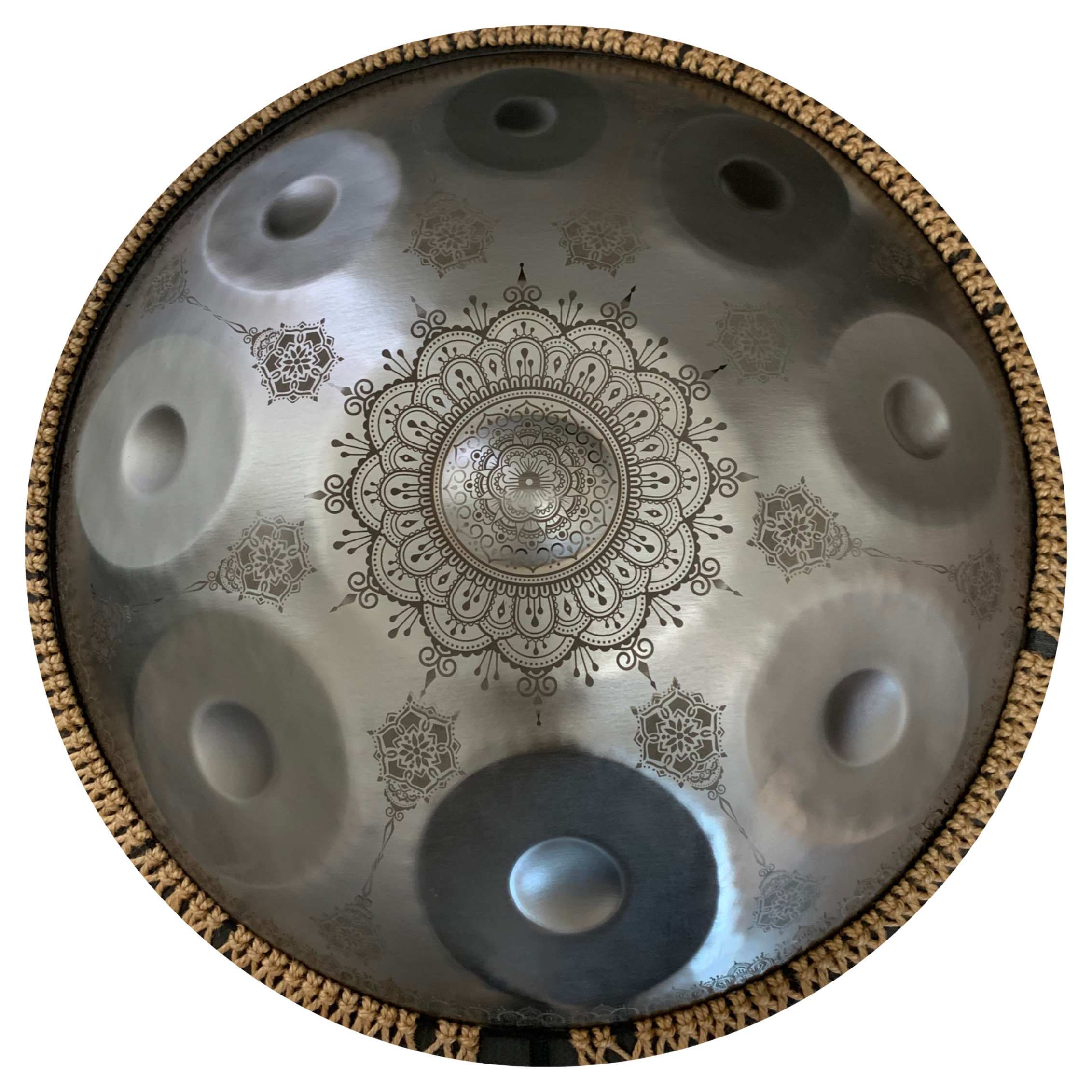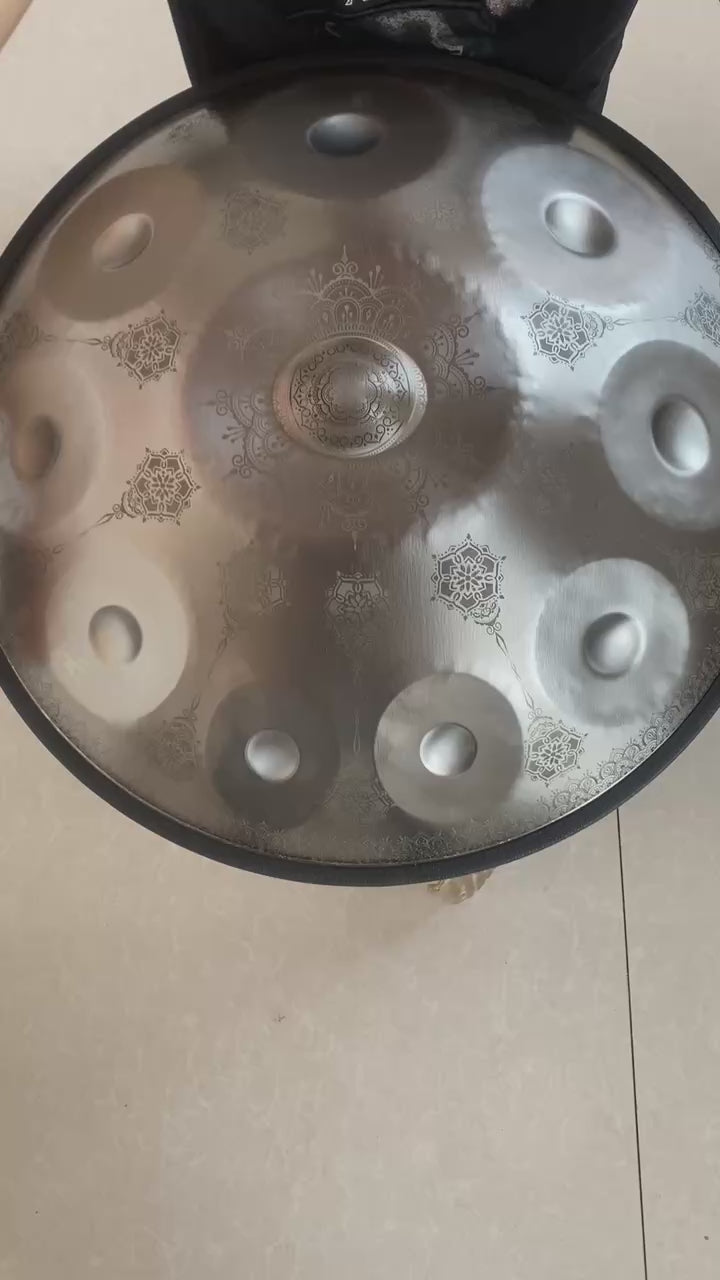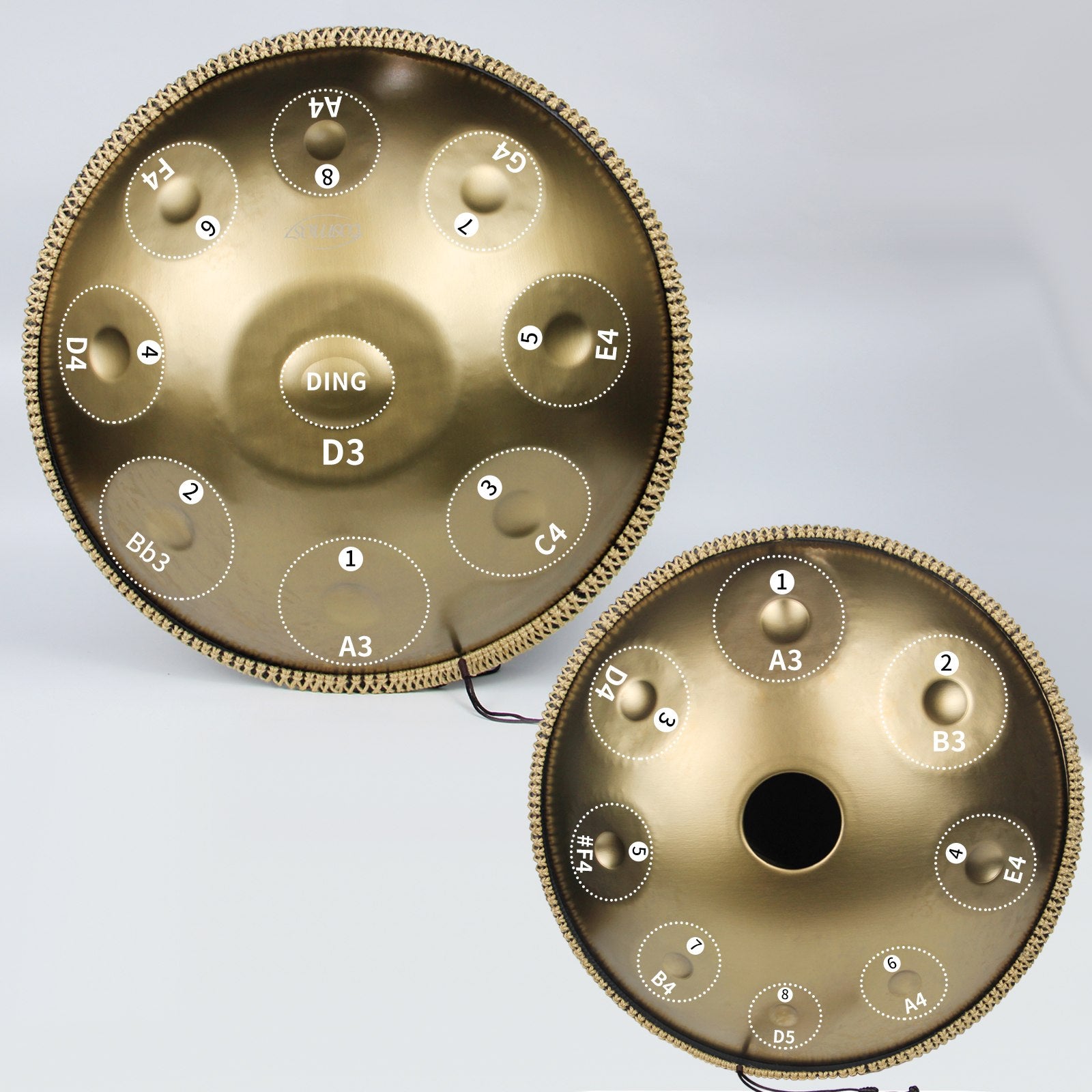Handpans, their ethereal tones and haunting melodies have captured the imagination of musicians & enthusiasts around the world. Whether you are new to the world of handpan instruments or simply looking for another one, selecting a handpan can be an exciting but daunting exercise. The guide will give you all the necessary information to help you identify exactly what handpan that is!

At the basics of Handpan instruments
The handpan (also known as handpan drum) is a group of musical instruments that are classified as steel percussion being struck by the hands to produce combined sounds between melody and harmony. The tank drum is made of two steel hemispheres the upper shell has a central note (like “ding”) and other tone fields around it. A sign at the end of each tone field indicates they have been meticulously hammered and tuned to a specific pitch, which means that every bowl is one-of-its-kind while still remaining harmonious in tune with one another.
Why Choose a Handpan?
Their mesmerizing and melodious notes have attracted so many ambient, world music or meditation circles to use handpans in their repertoires. Both beginners and professional musicians can create great music in no time due to the intuitive design. Handpans are also crafted to provide a unique play experience, allowing for relaxation as well and mindfulness in the beautiful sounds they create.
Things to Keep in Mind When Choosing a Handpan
- Scale and Tuning
Major Scales: These scales have happy sounding like D major, E major and G-major.
Minor Scales: These scales have a pensive and introspective tone (ex. D Minor, E Minor, A minor).
Exotic Scales: as the name suggests, these scales provide a new and unusual scale that isn't something you hear in Western music.
Think about the music you like and what kinds of songs you want to play while choosing a scale. You can determine which scale appeals to you by listening to sound samples online.
- Material and Finish
Handpans are usually crafted from nitrided steel, stainless steel or another kind of treated steels. Material: Different materials give rise to different sounds and they all have distinct upkeep requirements for maintaining the tone.
Nitrided Steel: Combines the durability and rust resist of a coated string, with an electric-like balanced tone as it gives more low end than nickel plated steel strings.
Stainless Steel: More expensive than Phosphor Bronze, 'brighter' or clearer sound, but perhaps slightly more difficult to tune and less corrosion resistant.
Raw Steel: Tuners that use steel for tone. It turns other colours, it rusts and will change the performace of your pieces if it's not taken care of forest!
Finish -the finish of a handpan can influence how it looks and feels as well. Polished, Matte and Coated are some of the common finishes.
- Craftsmanship
Craftsmanship quality affects sound and playability of any handpan. First seek out specialists with a reputation for accuracy and detail.
Handpans are artisanal instruments made by hand and each crafter has their own tuning, how they make them etc. Do some research on different makers, read reviews and listen to sound samples so you can judge the quality of their work.
- Price Range
Handpans come at prices ranging from $1,000 to the high several thousands and beyond depending on maker quality material construction may be price driven by difficulty of tuning While it can be tempting to buy a cheaper handpan, paying more for an excellent handmade instrument is much better value in terms of the long term enjoyment and playability.
Highly priced handpans -Critical sagte of way very low-cost they have less quality and craftsmanship
- Availability
Quality handpan makers have waiting lists because of the time each instrument takes to be crafted. Pack patience, you will wait long for your instrument. Finding the right quality handpan takes time.
Selling A Handpan Where To?
If you want to buy handpan, see the offers from next manufacturers:
- Directly from Makers
Buying from the maker: buying straight from the your guitar manufacturer ensures you receive a genuine top quality instrument. Shop around, read reviews and listen to sound samples of a range before parting with your cash.
- Handpan social events and gatherings
The great thing about these events is you get to meet the makers, play different instruments and connect with others in the handpan community. There are often handpans for sale at these things too.
- Online Marketplaces
Websites like Handpan. Also, forums and some Facebook groups have a list of the handpans for sale. Be sure the seller is reputable and ask for information about the instrument.
- Second-Hand Market
USED: Purchase a handpan that is second-hand and possibly more affordable. Verify the condition of thing and if capable check/try it before buying.
Tips for First-Time Buyers
- Research and Listen
Listening to different handpans and scales online_gettime-RichardCanonMedium This would help you realize which sound it is that your ear prefers and a scale or so to resonate with.
- Set a Budget
Like many other things in life, you need to establish a budget away. But keep in mind that a good quality handpan is worth it for years of playing.
- Connect with the Community
Handpan meetings and communities on social media; Is there any support from related communities?
- Try Before You Buy
When possible try the instrument out before you buy it. That will help you get a feel for how it sounds, plays and see if its suited to your playing style.
5. Ask Questions
Ask the maker or seller. Get construction details, tuning information, and information about maintenance straight from the horse’s mouth. A good seller will be happy to provide as much information as you ask for. Maintain your handpan: Your handpan needs proper care if it’s to sit pretty and generate sound the right way. Here’s how:
1. Wipe after use: Wipe your handpan with a soft, dry rag after each use to rid it of the oil, fingerprints, and moisture. If the instrument is very dirty, use mild soap and water, then ensure the handpan is dried off correctly.
2. Stow it away properly: Store your handpan in a dry, neatly cool place where it won’t be exposed to direct sunlight or extreme temperatures. Use a padded case to protect it from dings and scratches.
3. Apply a thin layer of oil: For example, apply Phoenix Oil or Frog Lube to the surface regularly. This helps to prevent rust, which tends to form in humid environments.
4. Leave it to the professionals: if the handpan cannot hold tunes or is otherwise defective, talk to the tuner. Avoid DIY fixes, as you are likely to make things worse through improper handling.
Conclusion
Choosing a handpan is a journey that calls for patience, meticulous planning, Fervent research, and guidance if need be. By gathering information about everything from the construction and sound characteristics to the main points in buying a handpan. You can compare and contrast the different factors and come up with a quality decision that reflects your personality. Whether you want the soulful nature of the minor range or the optimistic feel of the major notes, there’s no such thing as wrong with the right note out of the handpan. Make use of your connections with the community, collaborations with other people and taking enough time to get familiarize yourself with this captivating instrument. When you get the perfect handpan, you are on your way to discovering the euphoric world of melodic music.

